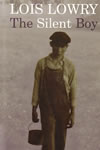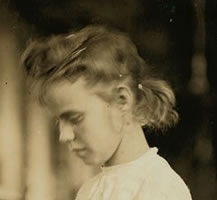Creating Comics in the Classroom
As you develop assignments that incorporate comics, think about the wide variety of graphic elements that could be integrated.
Evaluating Comics
Before jumping into the creation of your own comics, do some exploring and evalute the work of others. Go to the Cartoon Analysis Worksheet from the National Archives. Use this page to analyze comics.
Copyright Issues and Comic Creation
You can find lots of drawings, photos, and other graphics online. Before you use the photos, check the copyright restrictions. In most cases you can use them for educational purposes as long as you aren't reposting or selling them. If you plan to put them on a website, read the rules carefully. It's okay to use materials that are distributed as part of a media packet from a publisher. They often provide a book cover and one interior page. Below you see a photo from the CDC Image Library. Use these in a project on West Nile Virus.

For high school leve (mature students only), read a historical graphic novel such as the popular 300 by Frank Miller. The Battle of Thermopylae was a significant event in ancient world history. The Spartan King Leonidas and his 300-man bodyguard fought the massive army of Emperor Xerxes of Persia. The Spartans were destroyed. Is the novel based on fact or fiction? Research the authenticity of the storyline. Use tools like Wikipedia to gather resources in the public domain that students can use.
 Photographs and Comics
Photographs and Comics
You don't need lots of photographs for a successful project. Lois Lowry wrote an entire novel called The Silent Boy based on a single photograph! This book isn't a graphic novel, but it does incorporate a historical photo at the beginning of each chapter to get you thinking about the characters, plot, and setting.
Government websites are one of the best places to go for photos.
- CalPhotos
- Earth Science Photos
- Fish and Wildlife Photos
- Pics 4 Learning
- USGS Photo Collection - astrogeology, biology, ecosystems, geology, geography, water, national parks
- CDC Image Library
- FirstGov Photos and Graphics
- Library of Congress
- NASA Digital Image Collection
- National Archives Exhibits
- NOAA Photo Library
- Teacher Tap: Visual Resources
- Public Domain and Copyright-Free Sites
If you're looking for historical photographs, consider the Prints & Photographs Online Catalog from the Library of Congress.
Analyze photographs for elements that tell about the person or character you wish to develop. Use The Mill Girl from the Library of Congress collection as an example. How many different views can you find in a single photo? What if you zoom in or zoom out? What if you flip the photo or turn it? Can you tell an entire short story with a single historical photo? Use graphic software to modify the photos.
Go to the NOAA Photo Library. Examine one photo or a series of photos in-depth to tell a story about a science topic. Go to National Oceanic and Atmospheric Administration/Department of Commerce, NOAA's Coral Kingdom Collection (reef0508) for an example of a diver.
Remember that you can photograph all kinds of objects from airline tickets to birth certificates. Remember to remove credit card numbers, social security numbers or other personal information first. You can even use graphics software to create your own fictional documents.
Explore your graphics software. Try some of the following ideas:
- Take a color photo and turn it black and white. Tell a historical story using new photos you've made back and white.


- Take photos from different angles. Tell the story of a house using photos from many different angles.


Consider historical collections and primary source materials. For instance, go to the Library of Congress and search for 1918 flu.
When you go on a field trip, you need to proceed with a mission. Rather than taking snapshots. Look for closeups, distance shots, interesting angles that would be fun for a comic project. Explore the Field Trip: Pawhaten Village 1607 example.
Clip Art
Explore clipart online
- Awesome Clipart for Educator (lots of annoying ads)
- Cartoons and Color Pages
- Classroom Clipart (lots of annoying ads)
- Discovery School
- DK Clip Art
- Microsoft Office Clipart
Use the DK vacation clipart to create a story about the vacation of your dreams!
You could write about the life of a rock. Start with the DK earth science section. Then add your own photos of rocks.
Use the Discovery School clipart for a health and safety activity.
Original Art
From sketches to sculptures, you can take photographs or scan original works of art. Examine Ode to a Cabin. It contains original photos and sketches.
Many popular novels for young people are incorporating drawings. Some of these are graphic novels and others are just illustrated books. Check out The Diary of a Wimpy Kid: A Novel in Cartoons by Jeff Kinney, The Absolutely True Diary of a Part-Time Indian by Sherman Alexie and The Invention of Hugo Cabret by Brian Selznick.



Charts and Graphs
Create your own charts and graphs using computer software or online tools. You can also integrate screen shots from online games and other websites. These are particularly useful if students are doing critical reviews. For instance, ask students to review an online game, then write about how they would change it to make it more effective.
Techniques
Students need practice in building effective activities. Go to the National Archives Exhibits and choose an historical event.
Thinking - persuade, debate, (use escrapbooking)
Sequential Assignments - biography, science experiment, events in history, events in book
Ensure Depth of Thinking
- Add citations, FAQs, 1 page overview with comic
- Create audio to go with comic
Bubble Projects
- Screen shots and bubbles (Write about process in Interactive)
- Interactives
- Website articles (Sports section... point out stats, descriptions)



